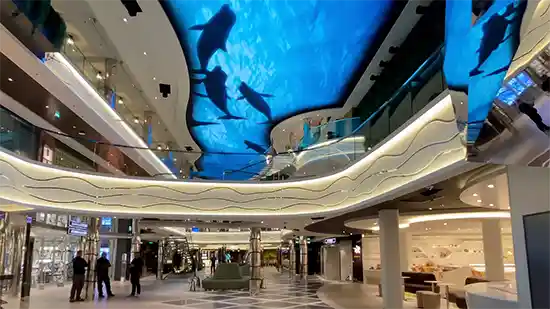iBelieveInSwordfish is a San Francisco-based motion design studio known for their innovative user experience and marketing expertise. Recently, though, they got a chance to work on an exceptional project unlike anything they’d ever done before.
MSC Cruises commissioned them to create 46 hours of 9k content for the new flagship MSC World Europa. Designed to run non-stop for seven days on the ceiling of the ship’s promenade deck, the animations featured nature scenes, flocking birds and CG photo-real sea creatures, as well as a variety of CG generative animations.
The project was a dream job for the creative team at iBelieveInSwordfish, and they handled it so well MSC asked them to do a similar project for the cruise ship Euribia. We talked with Matt Silverman, iBelieveInSwordfish’s executive creative director, about their process for both impressive projects, including how they used a variety of tools, including Cinema 4D, Houdini, Maya, Redshift and Midjourney.
Tell us about the Europa project, Matt.
Silverman: We spent about a year pitching the job against different agencies and artists. We started with mood boards to find creative inspiration, always thinking about the ship’s parametric architecture, which includes a 50-meter LED ceiling in the promenade.
MSC wanted seven days of bespoke content so passengers would be constantly seeing something new, starting with a sunrise each morning. After studying the architecture, we decided to create content that would complement and contrast with it, like parametric architecture, molecular and biological designs, fluid dynamics, flocking birds, skies at different times of day, star fields, schools of fish, scuba divers and traditional art.
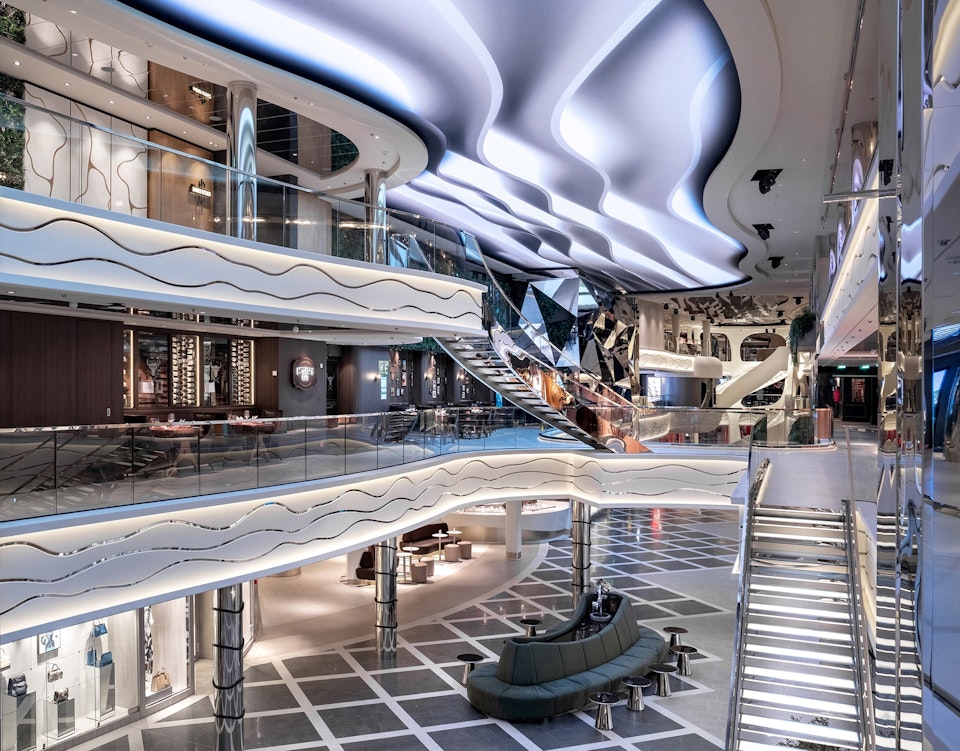
The client liked our ideas and whittled things down a bit. We had the idea to create parametric architectural renderings on the ceiling in the spirit of Zaha Hadid that would blend into the ship’s physical architecture. We started by taking our mood boards and style frames into Unity and created VR previz for Oculus Quest 2 to see which designs would work.
In the end we delivered 100 9k loops, so there was a massive amount of Redshift rendering done on our local render farm (7.9 years of compute time), as well as in the cloud with the help of Fox Renderfarm (15.6 compute years). Having the ability to scale in the cloud was critical for getting through the final stretch, and Fox really delivered.
Were you planning to create most of the content from scratch?
Silverman: Initially, we thought it would be easy to find stock footage for a good amount of the shots, but we realized quickly how hard it is to find underwater footage that would work like we needed it to. It was impossible, really, so we created marine life animations using a combination of stock backgrounds and CG foreground elements.
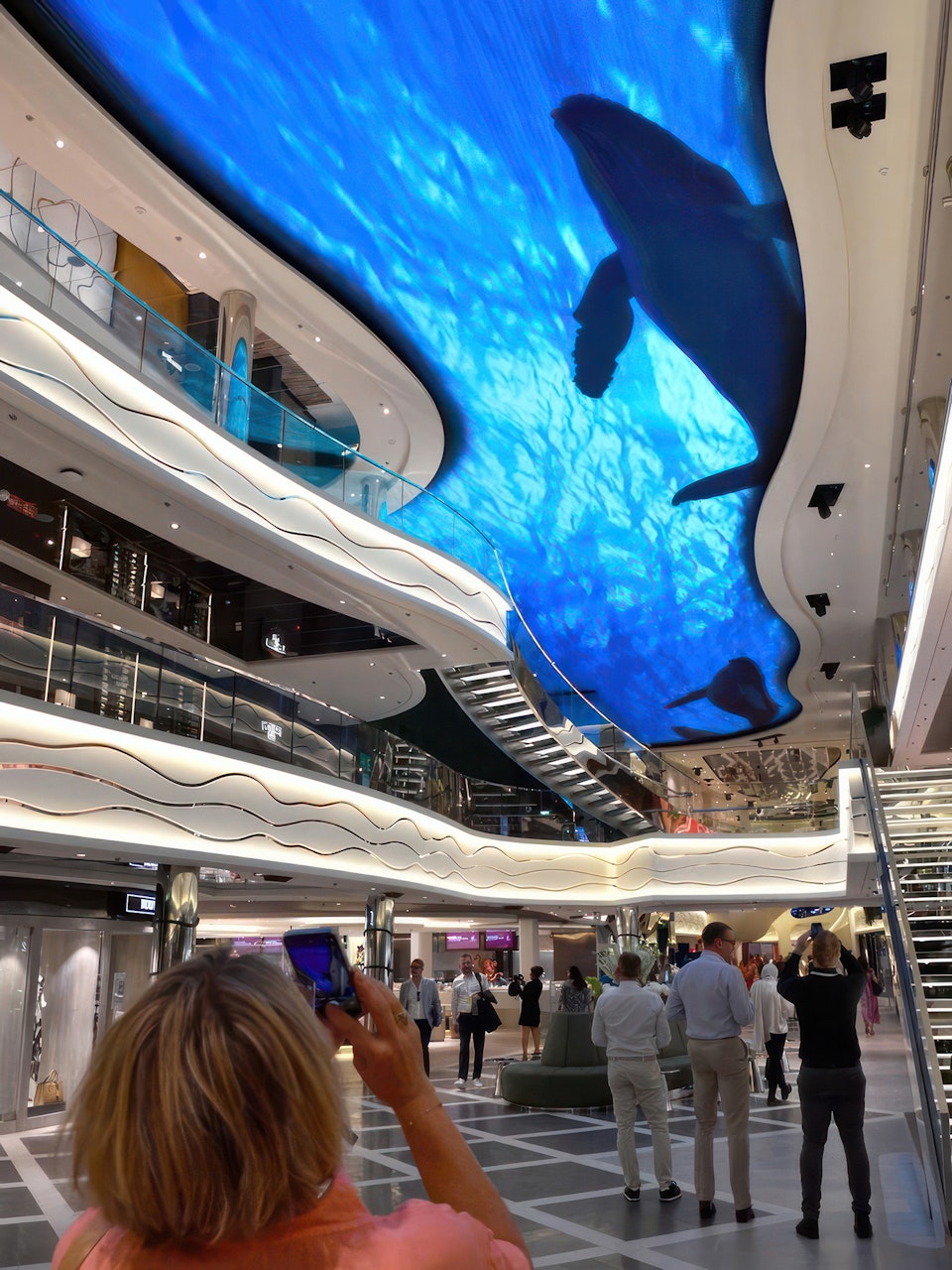
Most of the creatures were rigged by our TD, Fred Lewis, and hand-keyframed by our Animation Director, Jenn Emberly, using Maya. Flocking birds and schools of fish were made using dynamic simulations in Houdini, and everything was rendered with Redshift and composited in After Effects.
It was challenging because the ship’s LED panels were not installed until three weeks before it sailed, so the only way to see if the content was working was to bring it into VR. We were able to preview it using a headset to get the scale right. We finally determined that the creatures needed to be a bit larger than they are in real life, but not too big, so they looked like giants when viewed from the floor.
About 90 percent of the shots were done in Cinema 4D and we used Blender and Houdini for the rest. It was really important to have everything moving subtly so the imagery didn’t make anybody sick since the ship was also moving.
Say more about how you created CG architecture to work with the ship’s ceiling.
Silverman: MSC took me on a cruise to the Caribbean and I got to see their private island. I was on that ship when I came up with the idea for bringing the content and the ceiling together. The idea was to make a CG ceiling that looked real, so the camera hangs out on the parametric architecture we made for an hour while the ceiling fluctuates very subtly, opening up portals to reveal a bit of motion. Architectural ceilings were designed in C4D and rendered in Redshift.
Every hour on the hour, a portal opens to expose the next hour of content. For example, an architectural rendering would hold for an hour and then transition open to reveal scuba divers swimming. The 10-minute loop of scuba divers would repeat for the hour, then the next architectural ceiling transitions back on top for another hour. I wanted an hourly flow because that’s when passengers convene in the promenade to meet up for dinner or an excursion.
How is the Euribia project different from Europa?
Silverman: The MSC Euribia is their latest most technologically advanced ship. Unlike the Europa, it has a 23k arched ceiling in the promenade which is twice as long as Europa and longer than anything like it at sea measuring over 100 meters.
Like we did with the Europa, the goal was to create architectural ceilings that would transition in and out to reveal content. But this ship needed ceilings that were more traditional, like Roman architecture made of stone or glass ceilings in a train station.
The much longer, arched ceiling on the Euribia created some problems with transitions between content because we got a lot of distortion when we used a CG camera lens and moved very far from the center. To get around that, our Creative Director, Dean Foster, created the ceilings in C4D with camera perspective and then did an orthographic render on the final, which got rid of perspective and lens distortion.
Describe the process for the mosaic scenes you created for this ship.
Silverman: When we started work on some of the mosaic art scenes for the ceiling, we found a few reference images on Pinterest, but nothing was very compelling. So we jumped into Midjourney to create AI mood boards. Once we refined our prompts, we got some nice images that we took into Photoshop.
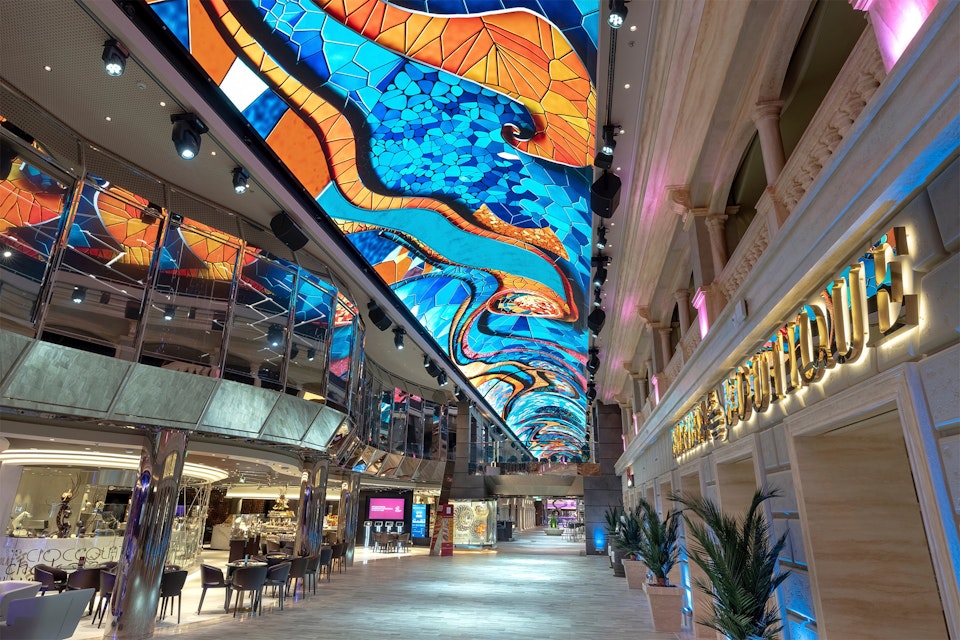
We cloned them together into a wider aspect ratio to show the client. Once they gave the okay, our concept artist painted the composition and layout. Because you can view the ceiling from any direction, we decided to create scenes that didn’t have a top or bottom.
Our 3D artist, Eddy Katt, created the mosaic underwater sea animal shots while Matt Milstead handled the procedural animations on the other two mosaic shots. Some of the mosaic creatures were animated, so Eddy got some rigged models from Turbosquid and created a swim cycle before using C4D’s Voronoi Fracture object to fracture the geometry into a mosaic. Like all of our other shots, we double checked the work in Unity and put them out into the VR headset to test.
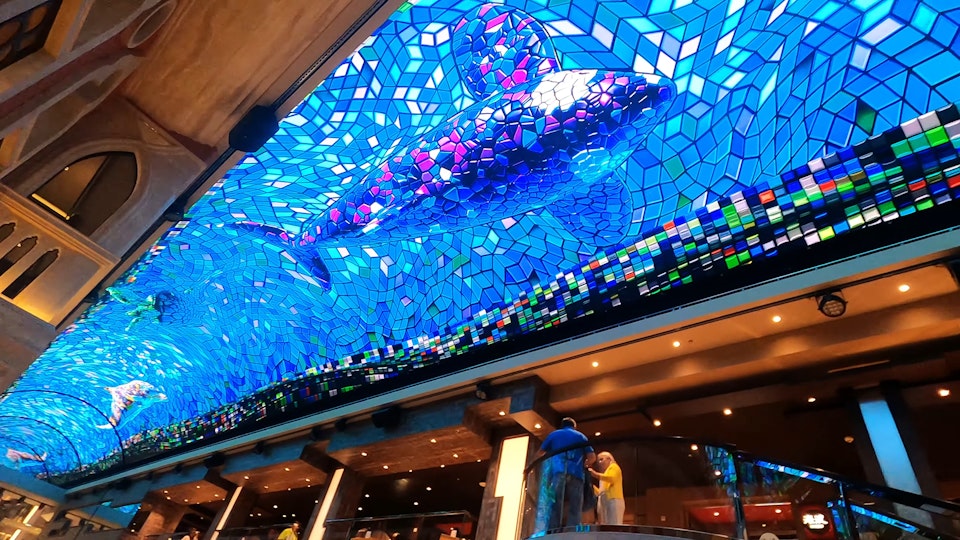
Will you be working on more cruise ship projects?
Silverman: We are already talking with them about the next ship, and hoping we can help on a larger variety of screens found on their fleet, from ceilings to walls to floors that can be fully interactive. I have to say that I have been doing this stuff for more than 25 years and this is the first project I have ever done that was art. There was no product placement, no logos, no branding, no marketing incentive. This was all about creating art, and I am so excited about these projects because of this.


